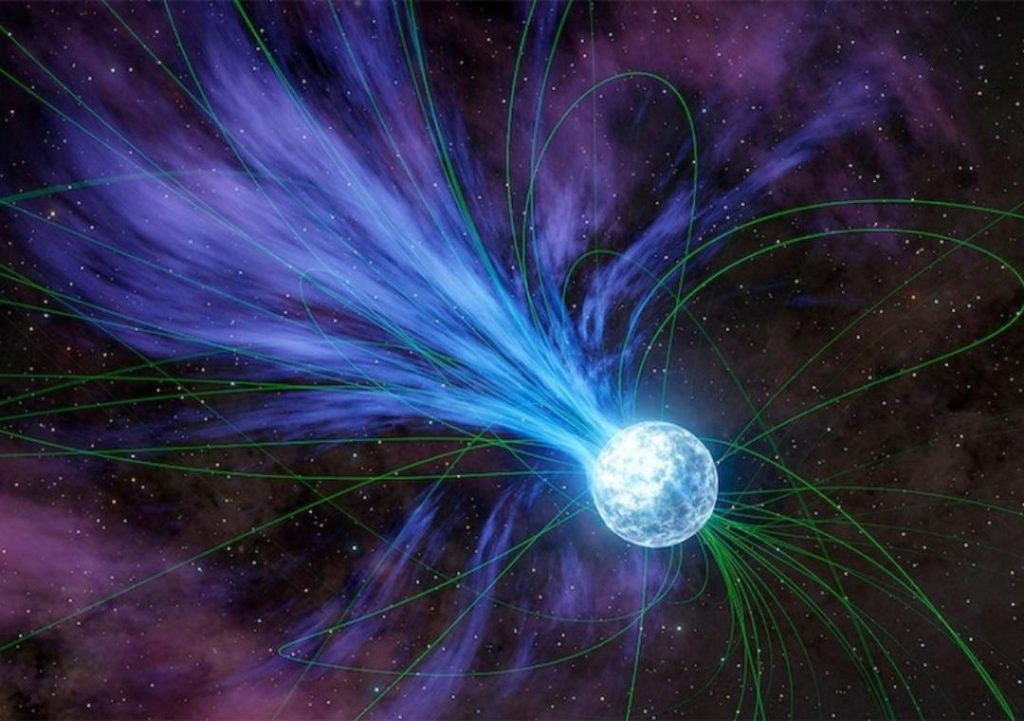
Gold & Platinum Created through Neutron Stars’ Explosions: Study
For centuries, humans have been fascinated by the origin of precious metals like gold and platinum. While we’ve always known that these metals are valuable and highly sought after, we’ve never truly understood where they came from. That is, until now. Recent research has shed light on the surprising origins of these metals: neutron stars. Specifically, magnetars, or highly magnetized neutron stars, played a crucial role in creating these elements in a cosmic event over 20 years ago.
According to a study led by Columbia University student Anirudh Patel, magnetars exploded and released flares that contained gold and platinum. These explosions, which occur approximately once per decade in the Milky Way and annually across the observable universe, are a crucial part of the process that created these precious metals.
The Mystery of Gold’s Origins
For a long time, scientists have been trying to figure out where gold and platinum came from. They’ve proposed various theories, but none have been able to fully explain the origins of these metals. Some have suggested that they were created in the hearts of stars, while others have proposed that they were formed through the collision of asteroids.
However, these theories have been met with skepticism, and the mystery of gold’s origins has remained unsolved. That is, until now. The recent study by Patel and his team has provided a new explanation for the creation of gold and platinum.
The Role of Magnetars
Neutron stars are incredibly dense objects that are formed when a star undergoes a supernova explosion. They are so dense that a sugar-cube-sized amount of their material would have a mass of about a billion tons.
Magnetars, on the other hand, are a type of neutron star that is characterized by its extremely strong magnetic field. These fields are so powerful that they can be thousands of times stronger than the magnetic field of the Earth.
When a magnetar explodes, it releases a massive amount of energy in the form of a flare. This flare contains a variety of elements, including gold and platinum. These elements are created through a process known as rapid neutron capture, or r-process nucleosynthesis.
The Process of R-Process Nucleosynthesis
R-process nucleosynthesis is a process that occurs when a massive star undergoes a supernova explosion. During this process, the star’s core is compressed to the point where it becomes a neutron star. This neutron star is so dense that it creates a massive amount of neutrons, which then combine with protons to form atomic nuclei.
As the star’s core collapses, the neutrons are released into the surrounding space, where they combine with the nuclei of other elements to form heavier elements. This process is known as r-process nucleosynthesis because it involves the rapid capture of neutrons by atomic nuclei.
The Implications of the Study
The study by Patel and his team has significant implications for our understanding of the origins of gold and platinum. For the first time, we have a clear explanation for how these metals were created.
This study also has implications for our understanding of the universe as a whole. It suggests that the creation of gold and platinum is a common process that occurs throughout the universe. This means that these metals are likely to be found in a variety of different stars and galaxies.
Conclusion
The study by Patel and his team has provided a new explanation for the creation of gold and platinum. It suggests that these metals were created through the explosion of magnetars, which are highly magnetized neutron stars.
This study has significant implications for our understanding of the origins of these metals and the universe as a whole. It suggests that the creation of gold and platinum is a common process that occurs throughout the universe.
Reference






